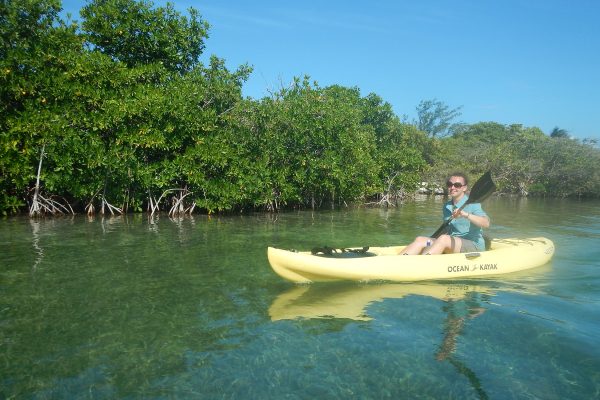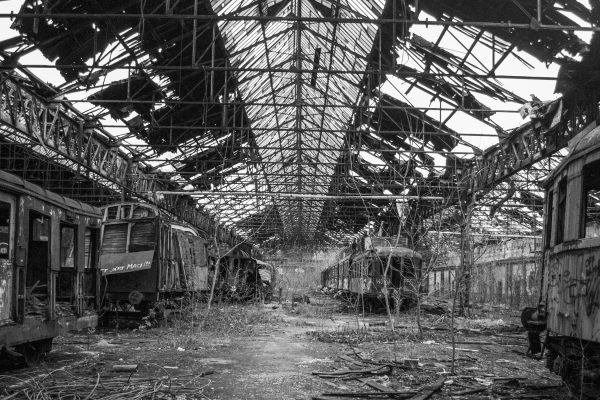Trip duration: 3 days | Approx cost: £400 | When: May – Sep
Doinit factor: Visit Europe’s least visited country and a breakaway territory!
As one of Europe’s least visited countries I think we can all be forgiven for not really knowing much about Moldova, but that shouldn’t put you of visiting. Wedged between Romania and Ukraine, Moldova can make for an interesting long weekend. There’s the countries rich wine heritage, ex Soviet charm and a rather interesting geo-political situation which has resulted in the defacto independent state of Transnitstria. More than enough to wet my appetite for a mini adventure.
After a 2 hour an 45 minute flight (delayed, of course) we land at Chișinău International airport. It’s late May, so as we leave the cool confines of the aircraft our bodies are hit hard by the 30 degree mugginess. After clearing customs, changing some money into the local currency (Leu) we jump in a minibus, standing room only, heading to downtown; a journey of about 20 minutes and amazingly costing us the equivalent of only 10 pence.
Much of central Chișinău is laid out in a grid with ‘Bulevardul Stefan cel Mare si Sfant’ intersecting the city and is where you’ll find the museums, parks, theatre’s, shops and everything typically associated with the main tourist hotspots. A walk down the boulevard is a good way to get a feel for the place, grab some food and cool down with cold beer. The city is rather chaotic, lots of traffic weaving through as people scurry around tending to their business. On the next street appears to be ‘market street’ or more appropriately ‘market block’ – there streets of vendors selling everything. There are rows of stalls selling’s eggs, cheese, shoes, wine, meat, cassettes… and it’s busy.
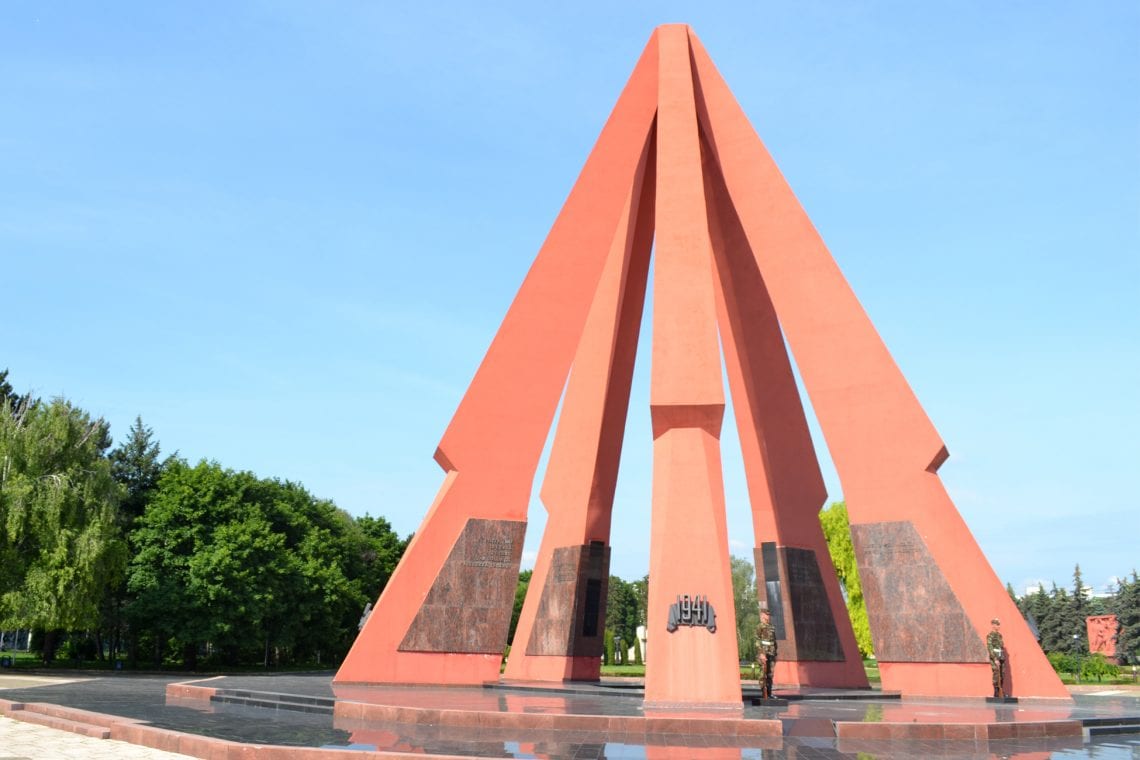
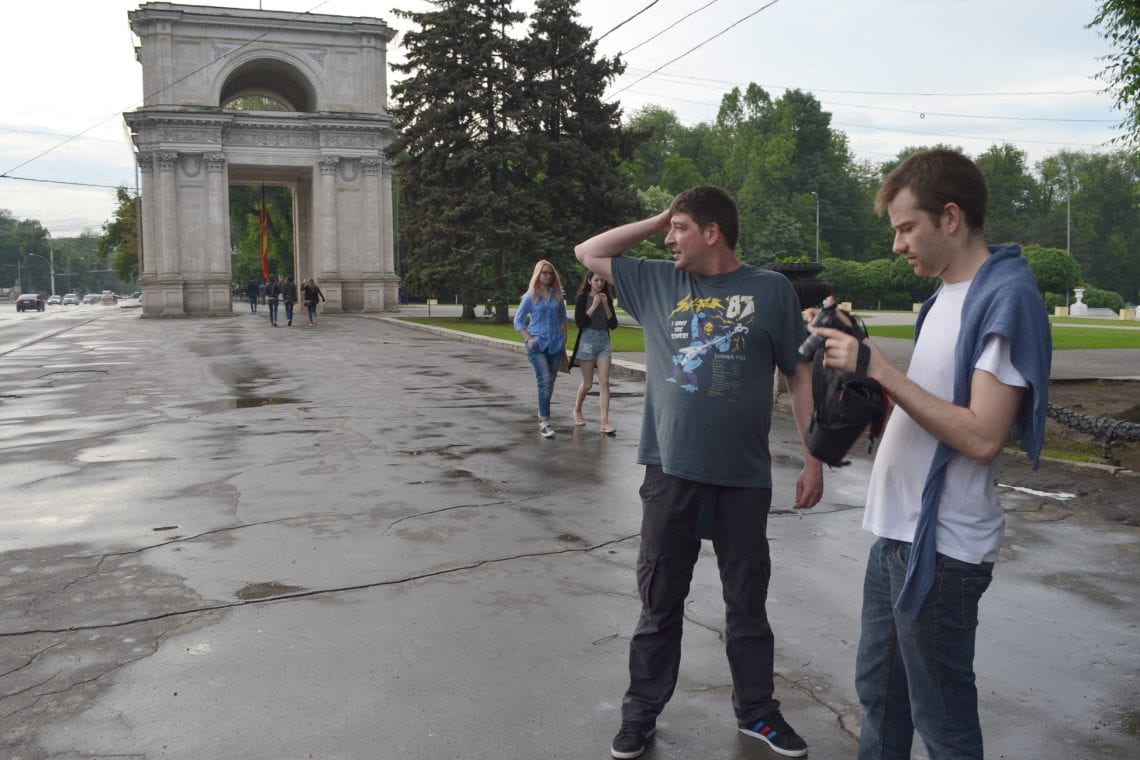
Above: Victory Memorial and Eternal Flame | Lee and Dan looking for the cities Triumphal arch | Outside the Academy of Science and Chisinua hotel
Like most ex-Soviet cities, Chișinău has its fair share of tall grey buildings but there are plenty of trees lining the boulevard, offering a bit of shelter from the relentless heat. Central Chișinău has its governmental buildings, museums, theatres and of course a Mc Donald’s. It’s far too hot to be inside so we stroll though the parks where stands the Monument to Stefen the Great and make our way to the not so far Arch de Triumph and the Metropolitan Cathedral. Away from the centre, is memorial park which is where a massive monument pays tribute to the Soviet soldiers of WW2 with its eternal flame and soldiers guarding it, every so often marching to and from various positions. It also wouldn’t bea visit to Eastern Europe without popping our head into the outside exhibition area of the Military museum to see a few relics of the Soviet area.
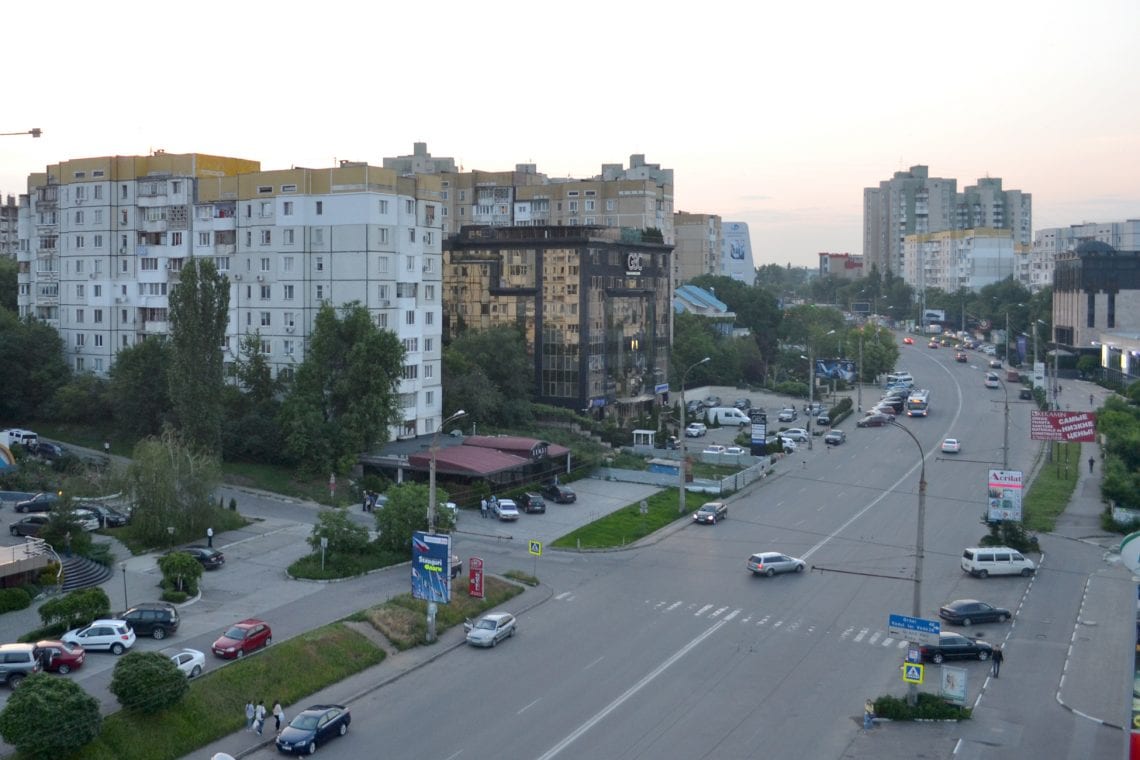
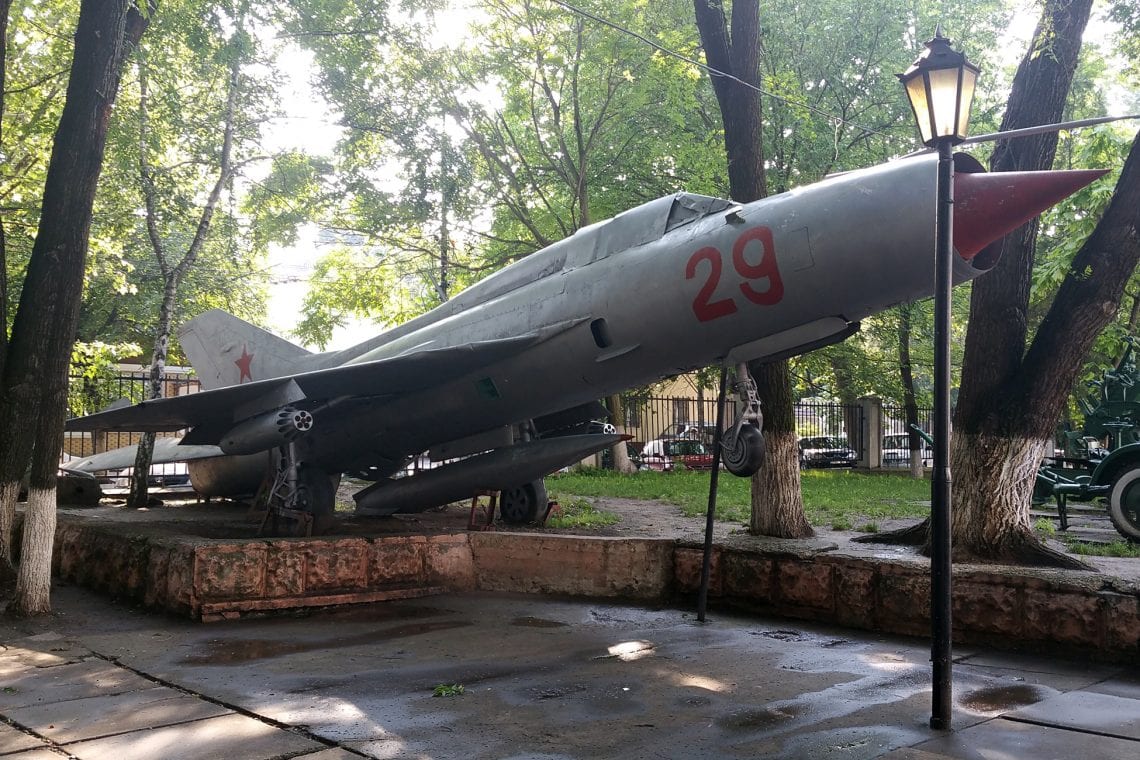
Above: Statue of Grigory Kotovsky with the Sky Bar in the background | Views from the Sky Bar | A Mig at the military museum
It’s horribly humid and we’re forced to cool down regularly in a café, fortunately the prices are pretty low and the beer is cold. Chișinău is present enough but there isn’t much to get excited about. Truth be told, we’re rather happy taking it easy. The afternoon brings a quick but brutal thunderstorm, but within a couple of hours the suns out again. I find the best way to enjoy the capital is by simply sipping on a cool beer and watch the world go by. But beer isn’t what Moldova is known for, it’s the country’s wine which is world renowned.
Moldova is one of the world’s largest exports of wine produces, giving the country a niche wine tourism industry. With that in mind we can’t resist a visit to one of many wine caves dotted around the country. We jump in a cab and 45 minutes later we find ourselves in the country side at one of the famous wine caves – Cricova.
Consisting of 120km of underground caves and tunnels Cricova is Moldova’s second largest winery. Some of these tunnels date back to the 15th Century where limestone was dug out to build Chisinău, but it was not until the 1950s when they started being used for wine storage. Our tour consists of a long electronic golf like buggies which takes us underground – where the cool temperature makes for a refreshing change from the blazing heat outside. The tour starts late as it seems to have been overbooked and I’m forced to go on the Russian speaking buggy.
Theses tunnels hold well over a million bottles of rare wine and play host to many high profile figures throughout history. Every so often the buggy comes to a stop and a tour guide provides a brief explanation. We are taken along the bottling conveyer belts, and shown the wine tasting rooms, even treated to a short promotion film in the underground cinema. So important Cricova has become, it has applied for a UNESCO world heritage status. While the tour is relatively one of the more expensive tours in Moldova, and its organisations can be a bit of a shambles – a trip to Moldova would not be complete without a trip to the wine cellar – or one of the many other wineries.
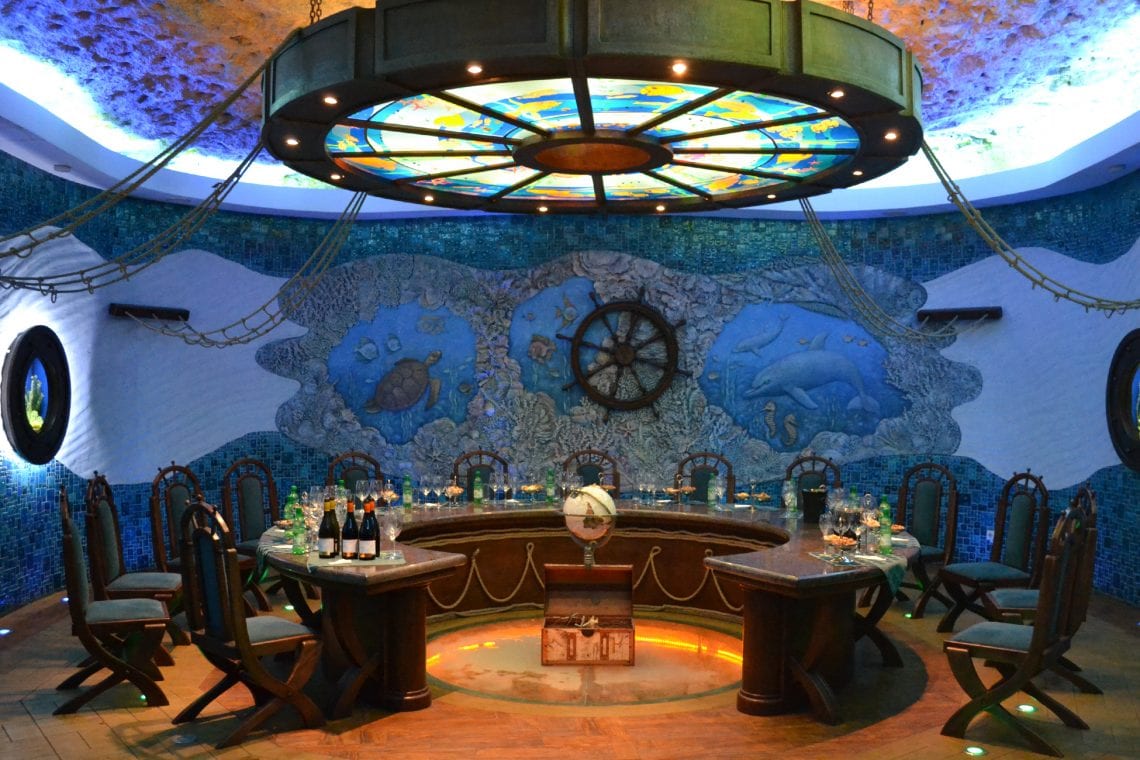

Above: Tasting rooms deep underground at the Cricova wine cellars | Cellar wine production | Entrance to the Cricova wine cellar
Another reason why I was so interested in visiting Moldova was to pay a visit to Transnitstria, a self-proclaimed Republic which dates back to conflicts in 1994. Whilst not recognised by any other sovereign nation Transnitstria, much it the irritation of neighbouring Moldova has its own currency, police force, government and even military. Its borders are guarded by Transnitstrian military as well as Russian peace keepers. While Moldova’s official language is Romania, in Transnitstria it is Russian that is spoken. Regardless what anyone thinks the fact on the ground is that Transnitstria is functioning as a separate state. For a long time Transnitstria has been the subject of mostly negative press – being labelled a police state, a dictatorship, the North Korea of Europe and ultimately has lead to me feeling a bit more apprehensive to travel here then I needn’t have been.
To get to Transnitstria it is s a case of navigating Chisinău’s chaotic bus station. More by luck then by knowing what we were doing, we find one of the 100s of white mini buses bound for Tiraspol, the capital of Transnitstria. The trip takes about 90 minutes, include the border crossing. The internet was rife with horror stories of crossing this border but it seems that times have changed and the border crossing is now rather straight forward. We jump of the bus at the border and told to enter a small building, there at a counter we present out passports and are presented with a small bit of paper which explains we have 24 hours to leave Transnitstria. We’re told not to lose it and that it will be collected when we leave the territory.
In Tiraspol, we find it eerily quite. Despite on paper this city has 500,000 inhabitants we hardly see anyone. The city seems rather well kept and I find the city a welcome relief from the hustle and bustle of Chisinău. We will only have one night here so we start with a walk to down town, we exchange some Euros into the local Rubbles – a currency which is not available outside of the territory and not to be mistaken with Russian Rubbles. All trips to Tiraspol should lead to the centre along the main ‘Strada 25 October’ where most places of interest can be found. The Tank Monument and the eternal flame are hard to miss. The KGB building with its bust of Lenin outside it is also pretty obvious; it’s worth noting that its best avoided taking pictures of this building. A small park hugs the river side where we take a moment to take in where we are.
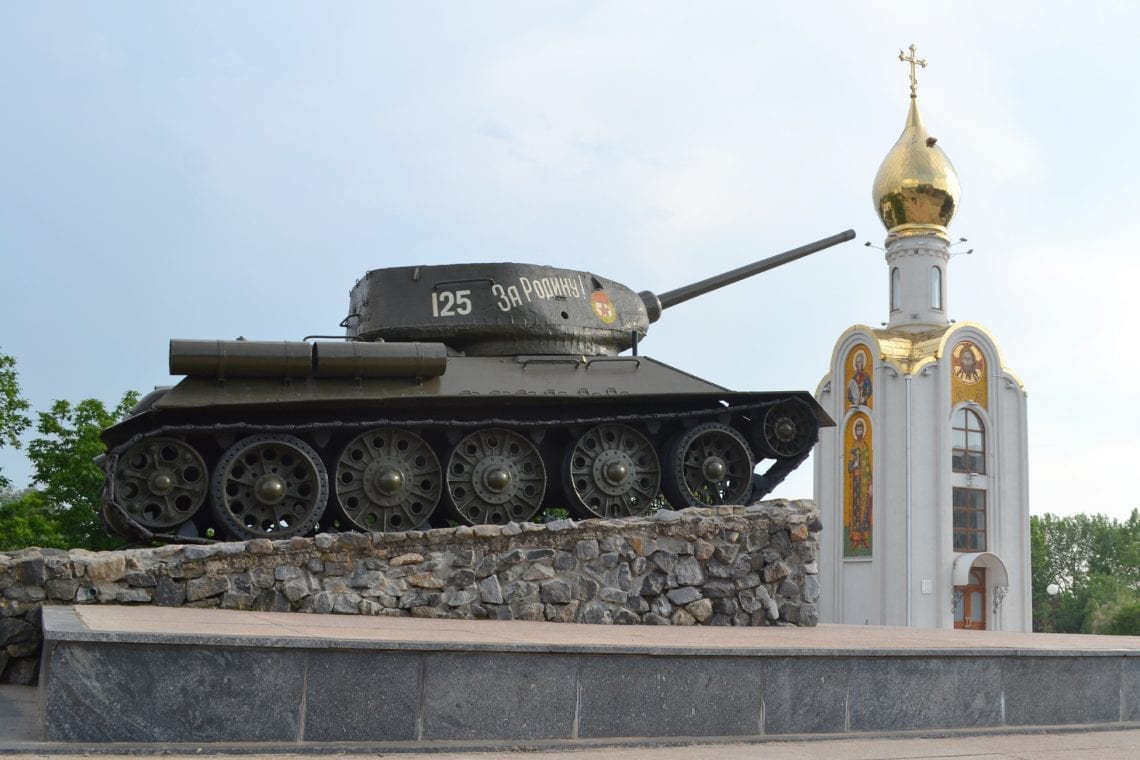
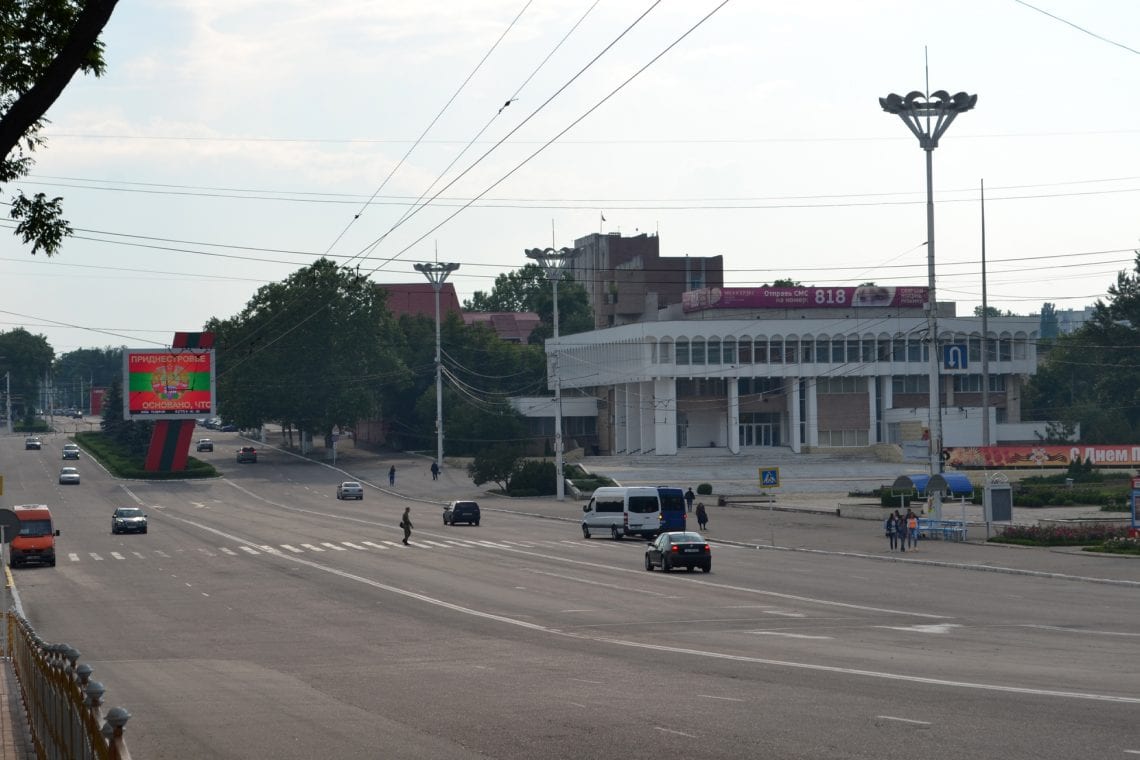
Above: Wandering around a quiet Tiraspol
It’s time for late lunch or an early dinner so we find a side street restaurant. It turns out to have a rather Western menu with its burgers and steaks except the prices are certainly much lower then what you’d find back home. Despite police presence around I don’t feel intimidated and they seem to ignore us as we walk around taking pictures, I feel quite safe here. As night sets in we continue to wonder the streets past the city hall, the House of the Soviets and monument to Lenin before a final drink.
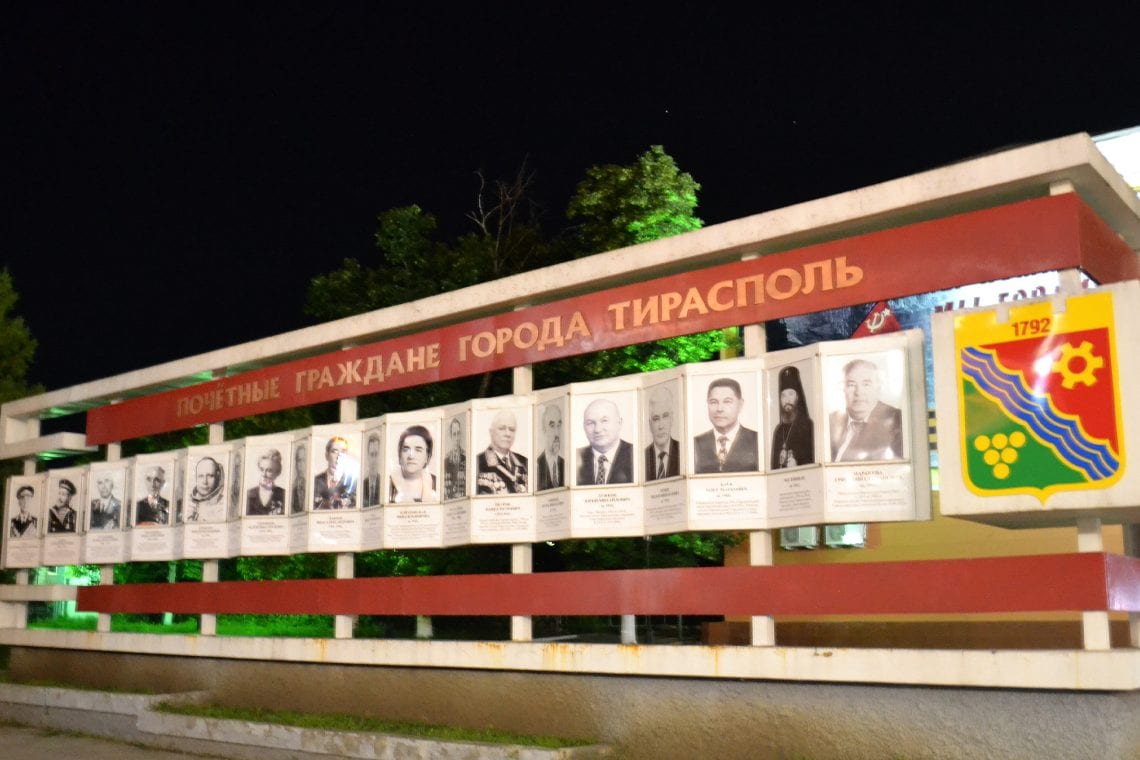
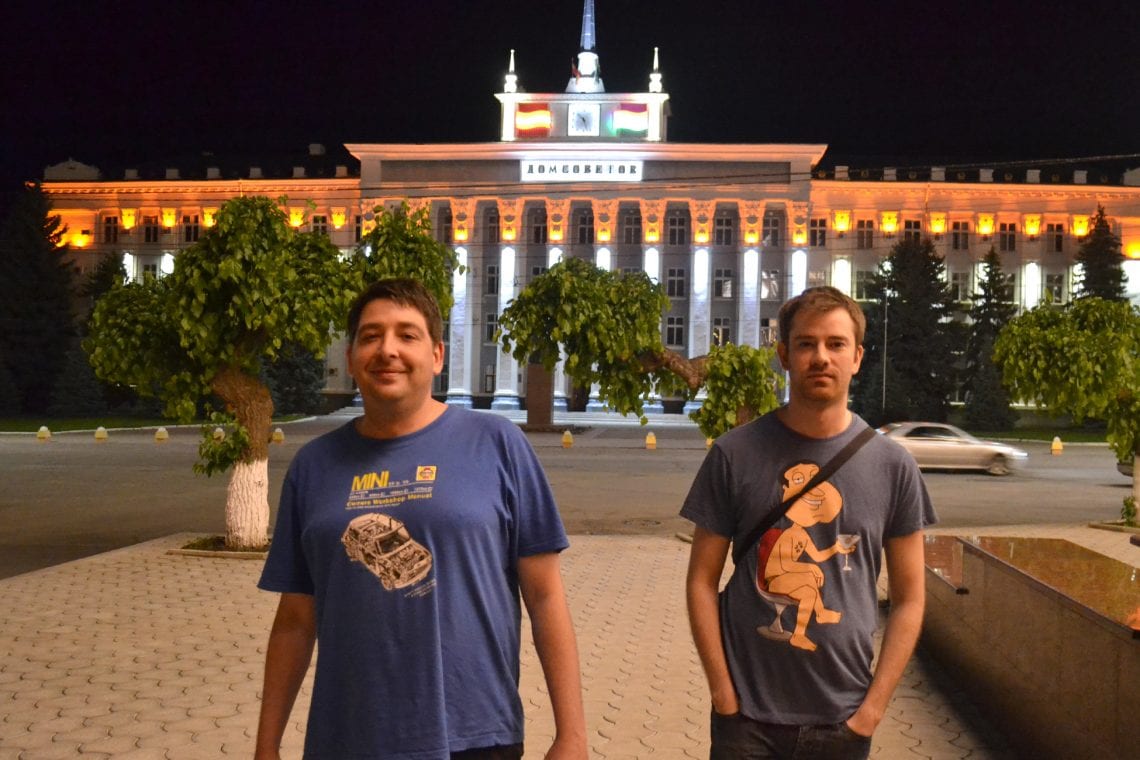
Above: Wandering around Tiraspol by night
The next morning we’re back at the central train station waiting for a minibus back to Moldova. It’s been a very short visit but we do not want to overstay our welcome. At the border we hand our paper slips back to the border guard and we’re back in a fully recognised nation. I rather liked Tiraspol, or perhaps it was the idea of visiting a place that many refuse to recognise. If you find yourself in Moldova than I would highly recommend a side trip to Transnitstria but to check the situation before you go as you won’t have much help from your embassy if you do get into trouble as their won’t be one.
Moldova (and Transnitstria) make for a slightly out of the ordinary long weekend break and that’s good. You won’t be surround by fellow travellers, you’ll feel like you’re a million miles away and when you get back and tell be people where you’ve gone you’ll probably be meeting a confused look as they ask you “Where’s that?”
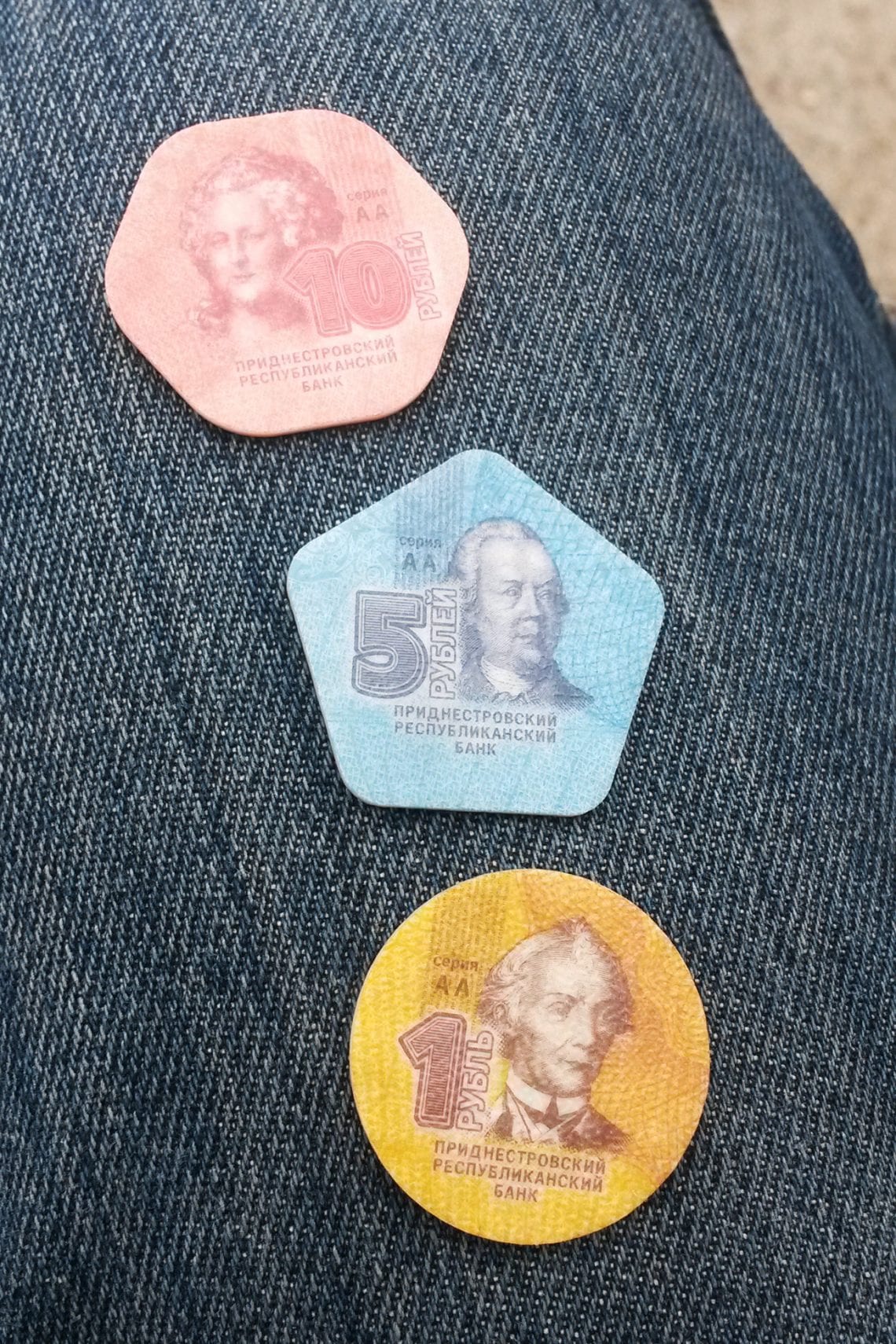
Above: Tiraspol train station with the territories flag high above | Counting my interesting Transnistrian plastic coins
WHERE TO STAY
Loads of options to suite all budgets in Chisinau. Slightly less choice in Tiraspol. We stayed at Tiraspol Hostel.




